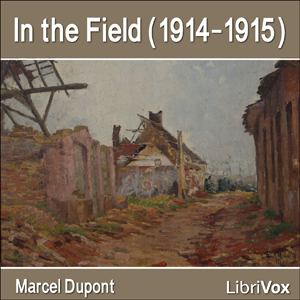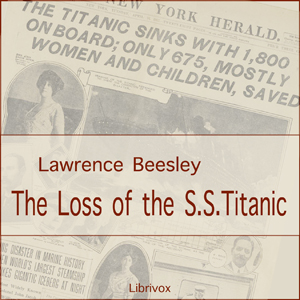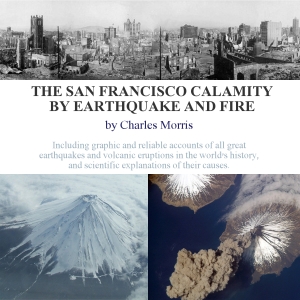- The Cathedral at Rheims, photograph, frontispiece
- The World War, Part I. The origin of the war. Historical note
- The outbreak of hostilities, by Major F. E. Whitton
- Why did Germany invade Belgium ?, by S. S. McClure
- Belgium's part (1914), by Emile Verhaeren
- The real causes of the war (1914), by Charles W. Eliot
- Germany's military masters (1917), by Woodrow Wilson
- The World War, Part II. The gathering of the armies. Historical note
- The training of Kitchener's Mob (1914), by James Norman Hall
- The first hundred thousand in training (1914), by Ian Hay
- En route with Kitchener's Mob (1915), by James Norman Hall
- The second German mobilization (1914), by Geoffrey Pyke
- The World War, Part III. On the Western Front 1914-1915. Historical note
- The retreat from Mons (1914), by a British Staff Officer
- A gas attack, photograph p. 62
- The battle of the Marne (1914), by Major F. E. Whitton
- The fall of Antwerp (1914), by Horace Green
- A prisoner in Ruhleben (1915), by Geoffrey Pyke
- The battle of the Slag-Heaps (1915), by Ian Hay
- Flame-throwers, photograph p. 100
- The legion captures a trench (1915), by Edward Morlae
- The World War, Part IV. On the Western and Italian Fronts 1916-1917. Historical note
- The battle of Verdun (1916), by Raoul Blanchard
- The biggest cannon on the Western Front, photograph p. 134
- Caillette Wood, an episode of Verdun
- The fight for Montauban, an incident of the battle of the Somme (1916), by Ian Hay
- A modern battlefield, photograph p. 148
- The battle of Messines Ridge (1917)
- Charge of the Canadians at Vimy Ridge, photograph p. 162
- The battle of Cambrai (1917), by Philip Gibbs
- The Garibaldi take the Col di Lana, told in Colonel ''Peppino'' Garibaldi's own words (1916), by Lewis R. Freeman
- The World War, Part V. The Eastern Front. Historical note
- Intrenched with the Austrians in Galicia (1914), by Fritz Kreisler
- The Russian victory at Przemysl (1915), by Bernard Pares
- The defeat at Gallipoli (1915), by Sir Ian Hamilton
- Landing under fire at the Dardanelles, photograph p. 204
- A British soldier at Suvla Bay (1915), by John Hargrave
- Bulgaria enters the war (1915), by J. B. W. Gardiner
- From Salonica (1916), by Albert Kinross
- The World War, Part VI. The War in Asia and Africa. Historical note
- The attack on Tsing-Tau (1914), by Jefferson Jones
- Campaigning under Botha (1915), by Cyril Campbell
- General Smuts's campaign in German East Africa (1914-1915), by Cyril Campbell
- With Maude at the taking of Bagdad (1917), by Arthur T. Clark
- The British in the Promised Land (1917), by W. T. Massey
- ''Jerusalem delivered'', photograph p. 266
- The World War, Part VII. Life in the trenches. Historical note
- The arrival of Kitchener's Mob (1915), by James Norman Hall
- The new warfare (1915), by Ian Hay
- A description of trench life, by René Nicolas
- The impregnable trenches (1916), by Henry Sheahan
- The World War, Part VIII. The fighting machines. Historical note
- The machines (1916), by William J. Robinson
- German prisoners in Ypres, photograph p. 312
- The machine-gun destroyers (1916), by Louis-Octave Philippe
- The tanks (1917), by Colonel E. D. Swinton
- British tanks in action, photograph p. 332
- The World War, Part IX. The work of the Navies. Historical note
- The escape of a merchantsman (1914), by Edward Noble
- The Heligoland action (1914), by W. Macneille Dixon
- The battle of Jutland (1916), by W. Macneille Dixon
- The Emden (1914), by Lewis R. Freeman
- The World War, Part X. The submarines. Historical note
- The sinking of the Lusitania (1915), by Charles E. Lauriat
- Life in a German submarine (1915), by Freiherrn von Forstner
- The work of the British submarines (1914-1917), by W. Macneille Dixon
- The World War, Part XI. Airplanes and zeppelins. Historical note
- Flying in the war-zone, by Theta
- A French fighting plane, photograph p. 402
- A zeppelin raid in London (1915), by Lewis R. Freeman
- A great air battle, by a British war correspondent
- The World War, Part XII. The hospital and ambulance services. Historical note
- Behind the Yser (1916), by Maud Mortimer
- The American ambulance field service (1916), by A. P. A.
- American ambulance-drivers, photograph p. 440
- With ambulance No. 10 (1915), by Leslie Buswell
- With an ambulance at Verdun (1916), by William Yorke Stevenson
- Wonders of war surgery (1917)
- The World War, Part XIII. The Red Cross and the Y.M.C.A. Historical note
- The American Red Cross
- Red Cross rest barracks (1917), by Elizabeth Frazer
- The Y.M.C.A. at the Front, by Francis B. Sayre, with an introduction by John R. Mott, General Secretary of the National War Work Council of the Y.M.C.A.
- A Y.M.C.A. Hut ''somewhere in France'', photograph p. 476
- The World War, Part XIV. Political and financial problems. Historical note
- Russia in Revolution (1917), by Paul Wharton
- Street scene in Petrograd during the Revolution, photograph p. 488
- The cost of the war
- The human cost
- The World War, Part XV. The entrance of the United States. Historical note
- The war message (1917), by Woodrow Wilson
- With the Americans at the Front (1917), by George Pattullo
- The President defines America's war aims (1918), by Woodrow Wilson
This is the last volume of the 15-volume series The World’s Story, originally started by Eva March Tappan. This book, edited by Horatio W. Dresser (1866-1954) deals exclusively with the time of the First World War, the events leading up to it, the battles and war engines, the political and diplomatic background endeavours and the cost - human and monetary - of this War. - Summary by Sonia
There are no reviews for this eBook.
There are no comments for this eBook.
You must log in to post a comment.
Log in











